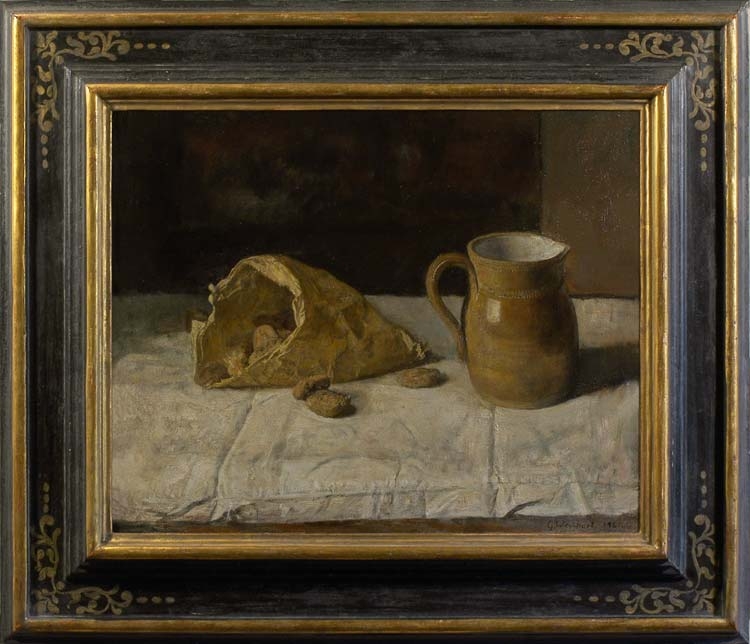Weissbort’s study of the Old Masters is evident in this extremely accomplished still life, with its clear relationship to works by the Spanish painter, Luis Meléndez, and the French Chardin (both 18th century), or to the still life elements in a Velasquez. It illustrates his interest in tonal, as opposed to colouristic, painting; this particular study is notable for the vast tonal range which has been exploited within an apparently very small palette of tints – so much so that the whole work on one level appears almost monochromatic; whilst on another each object can be seen to comprise an extremely wide gradation of shades, and is also part of a reflecting and refracting spectrum of colours. A complex, masterly painting.
Biographical details
George Weissbort (1928-2013) was born in Belgium and moved to London at the age of 7. He attended the Central School of Art & Design (now St Martin’s) where he was taught by Ruskin Spear and Rodrigo Moynihan. He was influenced by Arthur Segal to move from the abstract expressionism of the 1940s to realism, and by Bernard Meninsky, who taught life drawing at the Central School, to study the Old Masters. He turned first to artists such as Cézanne and Matisse, and later to Vermeer, Chardin, Velasquez, Corot, Titian, Holbein, and Piero della Francesca, amongst others.
He exhibited regularly at the Royal Academy, the Royal Society of Portrait Painters and the Fine Art Society. In 1964-65 he had a large exhibition in Paris, and in 2006 he had a one-man retrospective at the Chambers Gallery, London, followed in 2008 by another at the Denise Yapp Gallery, Whitebrook, Monmouth.
He wrote essays on art and criticism which look both at the techniques of making a painting, and of appreciating a work of art. The latter skill he believed came only after years of consciously training the eye to see as the artist saw, considering for example the ‘negative’ spaces around and between objects. He also discussed the work of specific artists, such as Lucien Freud and Vermeer.
His obituary in The Independent quotes Brian Sewell, a friend, as saying of him that Weissbort ‘painted the right pictures at the wrong time’. His appeal was to those who understood his models and influences; he could be described as a painter’s painter, and the same obituary quotes Paula Rego describing him as ‘a truly honest artist who knows so much about painting’.
Publications: George Weissbort, Paintings and Drawings (Parnassus, 2008), ill. 130 colour plates; includes transcripts of a filmed interview; essays by Tony Rudolph, David Lee and Bernard Dunstan RA.
YouTube video: A tribute to George Weissbort by John French.


